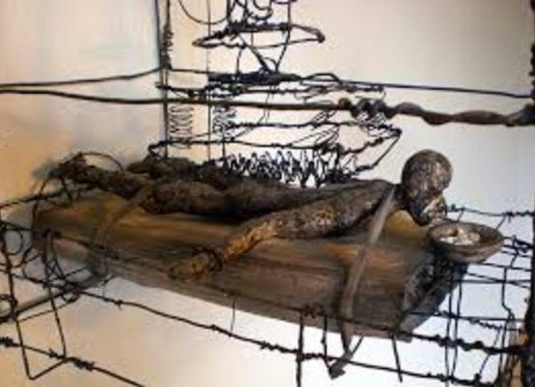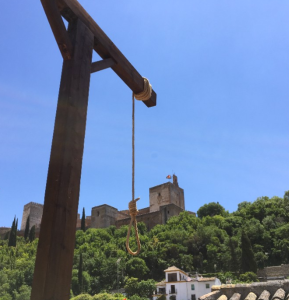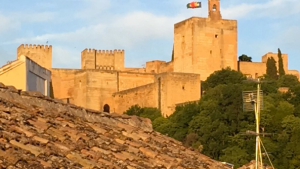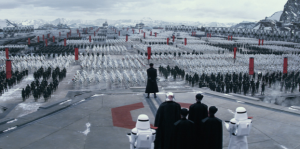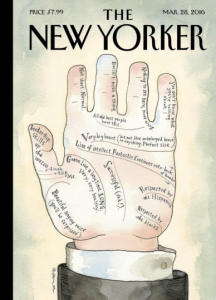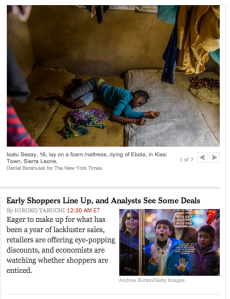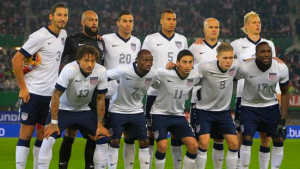This is the final movement of the first section of The Edge of Sorrow, “Bending.” Again, if you want it from the top:
Enjoy the ride. The next section, which will not appear on this site, is titled “Twisting.”
Thank you for following this to here. Comments are more than welcome. Do you want to know what happened?
*****************************
The Next Day: July 21, 1996
Somewhere in SoHo, New York City
Put a sprig of coriander on anything and it’ll taste good. You can conceal any bad taste – even rot.
Raul’s father taught me how to find something to say that would perk someone’s interest like that. “Keep your ear to the track, as my grandfather used to say,” Professor Javier Sicard instructed. “An old gaucho trick,” he said. “You can hear the train coming miles before anyone else. That’s a writer’s secret – the ear must be on the track at all times so you can be the first to know what’s coming down the track.”
I search and search for something I’m ninety percent sure a person hasn’t heard – something that doesn’t seem true and it’ll twist a person all around but is true. In the end it’s true.
I’ve not stopped looking for gems that can peak your interest since he told me. I write them down in a small black notebook that fits in my pocket – like he carried. I keep it handy. Think of a gunslinger in a western. It’s like right there by my side ready to be drawn. Identical to his notebook, except I hold mine together with a thin piece of purple cloth and he held his with a wide rubber band – and he stuffed leaves, business cards, train tickets, anything he thought memorable into it. I write these things down as soon as I find them, immediately. I write other things, too, but I love it when I find something like that, so exact – put a sprig of coriander on anything and it’ll taste good, no matter what it is. (I added the ‘conceal any bad taste – even rot’: poetic license.) I don’t know where I heard it first, but I wrote it down right away. Then waited. I waited for the right place to use it, the right time. Waiting and knowing are the key. Waiting for the right time, the right place to drop it in. Something will come up and you can use it. That’s a writer’s work, he told me. Fill notebooks, he said. Fill them. “You want to write,” he yelled. “Write. Write god damn it.”
Put a sprig of coriander on anything and it’ll taste good.
“That’s a lesson he gave you that he never gave me,” said Raúl, smiling. “He probably knew that I was heading in a different direction. I don’t know. But I keep a notebook. I do. Really. Maybe it’s a habit I picked up unconsciously.”
“He didn’t have to say it to you. You lived it with him.”
When Raúl smiles, there, in the corners of his mouth – they sort of turn up like, gently, and his eyes light up; it’s so attractive, magnetic, you know, and you just want to stay in it, the smile. Like I could see his father. I smiled back.
We looked down at our beers and let the memory settle until the void enveloped us again, waiting, as it does, for our guard to go down, for us to be weary of memories that are like a vapor that one can hardly hold.
We were somewhere in SoHo, the day after I came to meet Raúl in his apartment for the first time. It was strange because it felt like I’d known him for a long time and we’d only been together twice now, and briefly. We hugged and held each other and kissed and sat down and anyone passing by would have thought, what a nice couple.
He ordered a couple of Brooklyn Lagers without asking what I preferred – and I felt fine with that. Usually I’m not. I insist. At that moment, like I was fine with it. It’s probably because of the familiarity, the energy between us. It seemed as if a lifetime passed and we’d spent it together somehow and we were both looking back through the long tunnel of time. It’s a funny thing how two people can meet and the intensity of the moment brings them – us, like we seemed – instantly close. The bitterness that follows a tragedy brings with it unexpected intimacy. It was my first experience with it. I was confused because my heart was heavy but I liked the feeling – the sense that I’d known Raúl practically all my life. I can’t explain it – either can anyone else, I don’t think.
It was hot and muggy, really thick and sticky, and I was crashing with a bunch of friends — five girls – that graduated from Adams the year before and were busy working fourteen hour days on Wall Street – Lehman, Smith Barney, Goldman, Bear Sterns. The standard bearers. (I didn’t want to be with my parents – I couldn’t really, not after all this – on the Upper East Side so I stayed with my girlfriends.)
My friends were herded together fast tracking to millionaire status before they turn 40 – that’s the game. They’re willing to do anything to get there; once that happens, life begins. Everything is on the back burner – even children and family. They can be gotten at any time; they’re afterthoughts. We have choices, they told me; we can do this with or without men. So guys, well, they come and they go, you know. The college hook up on a wild weekend night has moved to suits at happy hour in a chic oak bar after a grueling week forecasting the ups and downs of the market, the hedging, the betting for a million. All one big roulette game, even the sex. Blame it on Sex and the City, they said. It was our bible, they said. Like a How To manual.
The five girls live all cramped up in a West Village loft. Having a great time, they made a point of saying, sardonically. I wasn’t sure whether they said that because we’re all suppose to be successful and have a great time after we graduate, especially from Adams because it puts such a premium on success, whatever that means, and they weren’t having the best of times, not really, and they were hiding it – or maybe they really were having a great time, I don’t know – but it didn’t make sense to me since their work had simply replaced school work and they were still laboring the same amount of hours, still hitting the bars Friday and Saturday nights and getting wasted, just like we did at Adams. Nothing had changed. I slept on their studio floor on a bogus mattress – like I did back at Adams when I stayed overnight in one of their rooms. Nothing had changed.
But everything had changed for me. They didn’t even ask about Professor Sicard. “Shit, too bad about the prof on that plane. Imagine that,” said Alexia, a blond, with shoulder length hair. Alexia had the perfect body; she worked out incessantly, which compelled her to seek out reflections of herself on any surface – windows, stainless steel trays, glass doors. Remember American Psycho? She’s the female version. Like she’d purse her lips and move her head around to find the right look as if she was auditioning for a part and she needed to strike the right pose. She flexed her biceps and said, “I can’t imagine the luck. Shit. We just never know. That’s why we have to grab it now. We just never know. Never had him. I can’t even tell you what he looked like.”
I told Alexia that I had him and that I really liked him.
“Oh. Shit. Sorry,” she said. She quickly went on to something else altogether different – like the guys she met at work, who was cute, who was an asshole, last weekend in the Hamptons, the new clothes she just bought on a shopping trip to Paris with her mother who was always keen on dressing her.
I needed Raúl; he was the only one that could understand what I was feeling. The only one. Shit is right.
Raúl and I agreed to meet for a beer the afternoon following my visit to his apartment because, he said, he was going to work for a few hours just to make the first move back to some sense of normalcy. But I don’t think it possible. I don’t. To be normal again. I told Raúl that. I also said that maybe – just maybe – the lack of normalcy was already in place way before anyone noticed. Like I feel that, you know. I felt it looking back at the year – his last year. Normal is a creation anyway – just like success is. I took Sociology courses. I know all about constructions of this and constructions of that (but it’s so boring always to have the same argument, no?) What is normal? Success, what’s that? How do we measure these? Things seemed totally out of whack. Perverse and confused – and maybe that’s what normal is. The only normal. The new normal, people like to say when things get turned around and are all shitty and there are no answers, no reasons why; like we simply change the meaning of a couple of words to coincide with how shitty we’re feeling, how inconsequential we are, how irrelevant and call it the new normal. How things get twisted this way and that. Normal is a moving target.
Right at that moment, meeting with Raúl, I was more anxious then anything, like something was eating at me and I was totally unprepared to deal with it so I was hoping he had some words of wisdom – or maybe he was seeing what I was seeing, though I don’t know how since he wasn’t at Adams last year. But maybe his father mentioned something to him in passing and whatever that was, it seemed odd, strange, like it could be something that may explain a life so gone, just like that, as if no one cared. So gone. A snap of the fingers.
Life is cheap, I realize now. I told Raúl that I’ve come to believe this like nothing else. And how his father stressed this but I was too naïve to understand it – yet. I’m beginning now. Life is cheap and the pace of life helps it along. We move on much too quickly past someone’s life. We cheapen life, I said as if all this time I’d been living in the clouds or beneath some fake cover or something unreal and even fake and, like, suddenly, after Javier’s death the curtain lifted and voila, there it was: we—cheapen—life. By how we live it, that’s the irony. It’s no longer a life journey; it’s a race, a sprint to the gold, a springing forth onto something that makes no sense, something, I don’t know, immaterial. Like a jaguar leaping onto its prey, mouth open, teeth showing, we latch onto irrelevance and hold on for dear life. But we come up empty. I don’t want to come up empty. I didn’t want to be one of God’s little children. That’s why I wanted Javier Sicard to be my mentor; that’s why I went to see him that day before school started; that’s why I changed my life away from the family business, money. That’s why, now, I’m more confused then ever because I suspect that things are more complicated. But I wanted to know more and I needed Raúl for that.
Raúl met me at some nameless place that had outdoor seating. We wanted to be outside, away from the maddening crowds sopping up happy hour. The place was like all other places – dark bar, black and white tiled floor, Latinos in the kitchen and a gregarious Irish bartender – an ox of a man – that poured indiscriminately when someone asked for a drink. (I couldn’t tell you the name of the place. I may not even be able to lead you back to it.)
The place was crowded with folks that knew each other, knew the place; it was an oasis – you could tell – their place to come to and slow things down a bit, stop the rush, check in with someone that would recognize them. A place to go to, check in and know that you’re okay – it’s not you, not your fault, things are what they are, and everyone agrees. That kind of place. I think it was on Bleecker near Broadway – no telling for sure. Somewhere. But its where the indifference that’s so hard to understand about life passed by incessantly, and its recognizable – and we sat outside and tried to slow things down a bit, too, and see if we could bring him back. To us. Just for us. Even for a moment.
I told Raúl that I had come to a conclusion: “We can’t trust anything – or anyone for that matter,” I said.
He looked startled and leaned back as if I’d pushed hard against his chest.
“I’m not a religious person and I’m not a believer and you must understand why,” I continued. “You must. Even your science is questionable.”
“Maddy,” he said. “Maddy, we can take science up to a point. I understand that. But we can use it to see. It helps,” he said. “It does. It’s the one instrument we have that can explain so much.”
“Science can’t explain what happened to your father,” I said. “Everyone is confused. All those experts. What happened to that plane? No one has an answer – just more questions. Terrorism? The military? A malfunction? What? A bomb? Who knows? Will we ever know? There’s your science. There you have it. So much for science – eventually it’ll be manipulated to suit the story. Science is a sprig of coriander. It covers over the nasty things beneath the surface. It tries to make everything sweet again so we can go on our merry way totally unsuspicious.”
“Science is a sprig of coriander that conceals the ugliness,” he repeated. “I see. A sprig of coriander. Something – you’re saying to yourself – is being concealed beneath the spectacle of science. What? That’s why you came to my apartment yesterday. Isn’t it? That’s what’s been eating at you.”
“Well, yes. That – and like I wanted to finally meet you. You’re his son,” I said and continued, reluctantly. “I’m not a religious person and I don’t believe because everywhere we turn there’s a lie. I’m convinced that he died because of lies. You can’t tell me otherwise. Call it intuition. Something happened to him and I’m trying to put it together. Help me put it together, please. I’m pleading. Can’t you see? I was there last year at school. It’s been strange looking back. A little confusing. No. A lot confusing. Things happened. I’m sure of it. And I’m scared now. I don’t know why but I’m scared. Like intuitively, I’m scared. It’s a feeling, you know. Deep inside. I need your help. Help me. We’re told so many stories; we’ve twisted so many different perspectives and ideas and histories and tied them together so tightly that we no longer know one story from another,” I said and I was leaning over my beer, hunched over, passionate about my confusion – and fear. “What we do know for sure – a certainty in life I’ve come to – is that there is no truth to anything, not even to what we see. Not even to death. Not his, anyway,” I said and I leaned back and took a sip of my beer. I’d gotten it off my chest. There. I felt better for the moment. “Trust me on this one,” I said having finished my beer and looking around as if sensing that someone was watching. “Trust me,” I whispered as I leaned towards Raúl, again. “I know. After all this, I’m learning. I – am – learning. For sure.”
“You spent a lot of time with my father. You sound like you’re channeling him. You do. But Maddy … Maddy, it’s terrible when at such a young age you come to this,” said Raúl. “Terrible. Even if it’s because of what’s happened. Maybe it’s even terrible if it’s true. Probably worse if it’s true because someone so young shouldn’t see so much.”
“I just turned 21. What are you 30 – 32 tops?”
“Thirty. I’m thirty.”
“What’s the big difference? You’re not going to give me some shit like, how can someone so young know so much, are you? Mr. thirty-year-old-doctor. At some point our ages are simply another construction and have little meaning – if any meaning at all. What, I’m not suppose to know certain things because I’m just 21? I can’t see certain things because I’m 21? After 30 – I suppose you think – like a magic wand is waved and just like that we can reason through things much better. More wisely. Nonsense. A little magic dust and you’ve arrived? That’s not how your father thought. Not at all. I’ve had professors that are total idiots, white haired imbeciles with PhD’s. They know nothing about me. Nothing about what’s really going on. Explain that to me. I’m sick of that way of thinking. Today, all bets are off. All of them. Don’t ask me to accept someone else’s shit for my reality. No way. I don’t see any difference between us – not really. Except that you’re done with school.”
“And graduate school,” he said, again with that smile that made me smile, too, sort of, because, like I didn’t want to let him know that he got to me with that last remark. It was funny – but true. He was talking about durability. Resilience. What age is after all. All the more reason why his father’s time wasn’t up.
Raul’s blue eyes were gray now, as if a film covered their usual splendor. They seemed tired, worn, suffering. The result of relentless tearing. But beneath them was that smile. He was learning how to live with two lives, his and his father’s lost for eternity.
A young, muscular guy was locking his navy-blue Cannondale to a No Parking sign right near our table; an aristocratic looking couple was looking at Durham sofas in the window of LUXURY FURNITURE across the street.
And something Javier Sicard said came to me: Truth has been made to suffer as a consequence of our unbridled actions. I told Raúl that his father said that.
He didn’t respond to me immediately. He took it in, carefully, as if he was tasting a fine wine for the first time and he wanted to experience it all, slowly, distinguishing every particle. He repeated it: “Truth has been made to suffer as a consequence of our unbridled actions.” And he followed it up: “Yeap. That would be him, mi viejo,” he said. “That’s just like my father. He would likely then say that unbridled actions become the truths we abide by.”
“He didn’t say that. But it sounds like him.”
It was one of the first sentences I heard him utter that September, last September, when I took his seminar. Truth has been made to suffer as a consequence of our unbridled actions. That’s how he began the class – that’s how it all started I’m thinking now. Or it was right around then – with the convocation, which made the hairs on my head prickle. The confusing year.
We were seated around his seminar table. Quiet. Expectant. Waiting. And he’s just there, a shit eating grin on his face looking at all of us. I don’t mean just scanning the room. His Roman nose, the square jaw, the clear, wide forehead, all of him larger then life – and with that grin he’d fix those forest green eyes on each one of us, wait till we looked away, and move on to the next person. There were fifteen of us. All silent, and very still. We didn’t dare move. You could hear a pin drop. When he got to me, I didn’t look away. Everyone else did. I didn’t. I smiled back instead. And he nodded approval – ever show slightly, like almost unnoticeable. And then he ran one of his bear hands over his short white scalp and leaned back in his chair. And he said it. Just like that. And he looked at each of us again. Then pushing on he said, Alexander Hamilton said that ambition must be tempered by ambition.Followed by a long pause. Ambition tempered by ambition, he emphasized again, repeating it twice. Ambition tempered by ambition. He made us dwell on that. I’m still dwelling on it – personal ambition and the collective ambition of society, others, institutions. How it all works together – or should. Something like that. I’m still thinking about it. I still don’t know.
“And maybe … Finding the virtue in ambition, no? How we value ambitions. What it is.”
I found it uncanny how much like his father he sounded, I told Raúl. It was unreal that his father knew so much about American history and philosophy and literature. More then most Americans even – and he was from Argentina. How does that happen?
“By chance, Maddy,” said Raúl. “By chance. Like you coming to my apartment after what happened. Who could have seen any of this coming? Any of it? That’s randomness and it’s always at play in the universe – by design.” He paused, searching for something he kept buried in his mind, his learning. “You know what Darwin said?”
I nodded “No”.
“He said we – man that is – can neither originate varieties, nor prevent occurrences – he can preserve and accumulate. That’s all we can do. We can preserve and accumulate the wrong things, you know. That’s the trap, I figure.”
“What does that have to do with anything? I don’t get it,” I said with some embarrassment, a feeling that, early on, came over me when his father spoke like that too. Sometimes Javier spoke as if the meaning he was after was universal, obvious – quite clear. The truth, I always assumed. This is how the truth gets told, I remember thinking, when it’s in you, your DNA – but when you’ve not experienced it like this before, it’s paralyzing. Raúl brought me back to that uncomfortable feeling. I was suddenly vulnerable. Sat back, looked away, drew on my beer, trying to make it all go away.
“How do we make order, Maddy? In a Godless universe, how do we do it? How do we know we’re really alive?”
“I don’t know. Maybe we bargain for it,” I said, guessing.
“We’re always working with what already is – what exists – and we had nothing to do with it. That’s what burns us. And when we work like that, artificially, we are exposed to new things and change. Darwin – my man. Yeap. Inescapable. That’s what he was thinking about. We’ve all been affected ever since,” said Raúl. He laughed and said, “I pulled that out of my undergraduate years. I don’t know how it popped into my head. Maybe you pushed it. Randomness is complex shit, Maddy, and it fits and we adapt where and when we can. If not, well, you know.”
“So you mean to tell me,” I said to Raúl, “that Javier’s father, your grandfather, a captain in the Argentine Air Force, fighting in a revolution against the lies of Juan Perón – that’s how your father told it – gets shot down. Dies. And there it is again. There you have it, the lies – tight fitting lies, you’d probably say, traveling through time, over and over, always the same lie visiting us, maybe even in different forms, and bringing damnation. But lies anyway. The same lies.”
“And fire and brimstone,” says Raúl. “Don’t forget fire and brimstone come before damnation. They’re essential for the religious story. All that exists in defiance of what is natural and diverse.”
“So your grandmother moves them, right – her and your father – to the U.S., and like that, that’s how we have one of the great minds of our time? Chance. Randomness.”
“How else can you explain it? Death shall have no dominion, said Dylan Thomas. See, I know some literature. After years with my old man, something’s rubbed off.”
“It seems that you’re simply saying that self-preservation is valued above all. Like, that’s disorienting – and stressful. No? Where do we find the laws of the world? And make things work.”
I opened my black notebook and I had dog-eared the page I wanted to share with Raúl because I knew that I’d turn to this over and over again. I quote it when I can. Say it to anybody. It seems to make sense to me, especially now. The more I read it, the clearer it becomes. I said to Raúl that his father would tell us that there’s nothing else but the here and the now. No past – it’s gone, left to weak memories. No tomorrow. It’s only about now. This – is – it, like Javier used to say. (But as I was saying this, I got the sense that Raúl knew all this about his father already. How could he not?).
“The rest of the game,” I read from my black notebook exactly what I had hurriedly taken down in class intent on catching every word Javier said, “involves merely ensuring that we make people into compliant individuals. That’s all. The ultimate bargain. A collective that complies with the wishes – and perversions – of those that dominate. Just don’t look down – the abyss is daunting. And alluring. Rot wins. Shit rises,” I read, looked up and stared into Raúl’s blue eyes – and I grinned.
“Maddy, listen to me. I love my father. Dearly. You know that. You know I do. I don’t have to tell you that. The pain I feel in my heart I feel to the bone. But you. You Maddy, so young. Beautiful. Really beautiful. So intelligent. Such promise. You can’t be so pessimistic. You can’t have such a nihilistic view of things. No, please. He didn’t. My father didn’t think that way.”
I wanted to disagree with him because Javier did have that view – I got it from him, he lead me to it – but I got hung up on beautiful. It took dominion. Everything stopped moving. Beautiful held me captive. The way it came out of his mouth – easy, softly. Like it had been there for some time and he was contemplating it, aging it, waiting to see when to let it out. Beautiful. Soft like that. It didn’t say that I’m good looking. It didn’t speak to me like that. He didn’t. I am good looking. I had on an earthy yellow tank top and a short skirt – light brown – and my thighs are perfect. Tan. So are my ankles. Raúl could see that. Maybe I was showing him – I don’t know. Maybe that was troubling me – that I wanted him to see me. I’m short but I’m long, too, because I’m skinny and strong. I have definition. I know that. A straight nose. Full lips that some idiots at Adams can’t take their eyes off of when they talk to me – so annoying. I hate that. I know all that about myself and I could see Raúl, here and there, even when I first met him, looking here and there – but gracefully not like some of the boys at school that stare at you as if they’re ready to eat, bib on, knife and fork in hand. Pretty girls experience this all the time. All pretty girls know this – we don’t need a mirror. Like we’re told from the start: You’re so beautiful. We’re recognized. The looks we get are different. It’s accepted that beauty is this or that and that the culture pursues it with a vengeance. Whistles follow. Guys on the street grabbing their balls and licking their lips. Other men just look and smile – the educated ones. And there are those educated ones, like at Adams, that are way too young and think their shit doesn’t stink, those blond, blue-eyed Ralph Lauren wanna be types that saunter over and say something really fucking stupid, “Hey beautiful, I can cheer you up. I can wipe away your gloom.” Ugh. Some educated men can be so school smart and know absolutely nothing. A sprig of coriander won’t help here.
Beautiful. His beautiful said something else. More. It said more. It worried me, frankly. It said that there was something there between us. Some thing. I worried that it had a strange connection with his father; that I was somehow a way for him to, I don’t know, return to his father, like get him back; that I was a therapy; that I could help him through this darkness that was so thick we could both feel it, taste it, touch it; that at some point – this I feared the most – when all was said and done and he was over this moment and onto the next I would be shown the door, thank you very much, adios, good-bye, all done.
I’m not going to go through life with people thinking that’s all I have to offer.
“Maddy. Maddy where are you? Do you understand what I’m saying?”
“When I think about last year,” I said snapping back into the moment, though the comment about beautiful remained with me – a dull humming noise. “Like when I now think back, I don’t know, I was engaged or something because I took notice – of something. I did. There was something – I’m not sure – strange, tragic events that sprung up right at the beginning of the year,” I said to Raúl. “I took notice. How could you not? Like I don’t know what. I took notice – and I’m feeling it now. There was more to it. More beneath the obvious. It was convocation. It was then when it started. The curtain began to be pulled back … I don’t know … Like I began to notice … things. Things. Things that don’t add up. Or maybe they do – I’m not sure. This is why I’m here, why I came to you.”
It began like this: students marched two-by-two to Mather Chapel. It looked like a picture, the gentility, the privilege that abounds at Adams. Nothing out of the ordinary. On the contrary. The sun was high, the skies cloudless that day last September, a few days after I visited the great Javier Sicard in his office and pleaded my case to be in his seminar, right before the start of school. The sky, the air, the sun – it was all perfectly harmonized for the Convocation, the welcoming of the new year. Like it was ordained or something – it had to be like this, anyone would think. What could be better, right?
The faculty gathered near the library. All in their colorful regalia glistening in the afternoon sun — the reds, the golds and the greens, the purples, even the black had a spectacular glow. The beginning of another school year. Every year, at the start of the year, we follow ghosts that obediently marched into chapels, just like we were doing, in ceremony, the attired disciples laid out for God to inspect and sanctify. We have to understand that. That’s what I was thinking. We are the anointed, the select. Privilege in the air – our destiny. God’s will. All that shit in our favor. All of it.
I hadn’t been to a Convocation since I was a first year and had to go – and maybe it’s that I didn’t know any better then. The naïve new student, you know. But I was junior and I wanted to start gathering memories of the place, the rituals of academia that make the ground hallowed and after my meeting with Professor Sicard, I decided to attend this time, one last time, knowing full well that as a senior I wouldn’t want to go because I’d be too tied up deconstructing the nature of such a spectacle, the way professors in their robes love to play hide and go seek with their fancy language and their idiosyncratic knowledge.
I wanted to go and look for my Professor Sicard, too, hoping I wouldn’t find him in the procession. He told me he hated all that dressing up, the disguises, the theatre, the circus of it all – and that we had enough of that in academia as it is, so he never went to the ceremony. Not even to graduations. He doesn’t attend those either. I looked for him anyway to see if what he said to me was true; to see if I could hold him to his word. I didn’t know him yet. And I guess, secretly, I wanted to see if he would show up last minute or something. That would say something.
Professor Javier Sicard and I were somehow preternaturally connected already.
At the rear of the faculty parade, lagging a good ten steps behind, alone, there was Professor Dickenson. He’s a classics professor. Was, I mean – he died that fall. Heart attack they said. One of the confounding truths, I think. I noticed him because the sun bounced off of his Harvard red and it looked like a spot light was on him and he was about to give a soliloquy. He looked resplendent. An image for all time center stage. Yet he also seemed aged, haggard, having some difficulty keeping up. He was hunched over, as if he could hardly stand and he walked slowly, laboriously, and from where I was it appeared as if he was talking to himself. But we all knew that he talked to himself often – nothing new.
I was off to one side in the middle of the quad, the history of the place written into the gleaming marble all around me standing in judgment. I never felt Adams like that before, never noticed Adams in such a strange and foreboding way. It felt as if it was actually looking right through me – all it stood for, all it was, all it would be forever leering at me. I turned three sixty and felt so small, Stanhope and Whitman and Adams and Franklin, all of them scowling. My only respite, ironically, was to run to Mather Chapel. Driven there by the school I never imagined. I didn’t know why, either. I don’t know why at that moment I felt so alienated from the place my entire family attended – and where future generations of our people would go too. It was as if I was standing outside myself, watching myself be; it was like I was seeing myself doing myself, really seeing myself for the very first time. And I didn’t know what I was feeling, not at all. Premonition maybe.
But I quickly let it go and stuck to my plan: wait for the first years and the faculty to enter Mather Chapel – and go in. Sit near the back, that way I could exit unseen and quickly if it got too boring.
But my attention was taken by Professor Dickenson, hunched over, troubled and losing ground as the faculty chatted with each other while strolling in a fine line towards the chapel’s large oak doors that were opened wide, like outstretched arms waiting to embrace the arriving flock.
And as if out of nowhere I noticed him: Javier Sicard, there – “Your father,” I said to Raúl – edging out from behind the stand of pines that sits on the way to the knoll before the chapel. He was wearing a black t-shirt and jeans – that’s all. No regalia. He moved quickly, gracefully towards Dickenson, catching up to him from behind, putting his arm around him and turning him and leading him away from the procession.
As they walked away they seemed to be talking. Professor Sicard kept an arm over Dickenson’s hunched back. From where I stood, it looked as if Sicard was holding him up. Dickenson would raise his head towards Professor Sicard, look at him intently and say something, waving his arms. I could see Professor Sicard pat him on the back, like consoling him. He nodded, agreeing with Dickenson for whatever reason.
Javier turned and looked back at the procession heading to the chapel. That’s when he saw me; he caught my eye. He kept walking and listening and staring at me standing perfectly still and totally alone in the center of the quad. For some reason, I thought of myself as Christina – Andrew Wyeth’s Christina Olson crawling to her house. I don’t know why. The starkness of it maybe; the color, the gold rolling to the steel horizon; the aging house on a hill. Christina, the wide expanse before her, the solitary house on the hill, lonely, perfectly still in a universe that’s moving, constantly changing and she can’t keep up. Like a buoy bobbing in open ocean, holding time, a record of us, for us to know.
I was torn: whether to go into the chapel and hear some rapturous speech about Adams’ heritage, how it’s the pinnacle, the summit of success for all who aspire to be leaders – or follow Dickenson and Sicard as they slowly made their way back to their offices in Whitman.
“What did you do?” asked Raúl. And he ordered two more Brooklyn Lagers.
I remained true to my mission and went to the Convocation because, if I followed Dickenson and Sicard, I wouldn’t be able to explain my spying. To be true to the story, I didn’t think twice about it – perhaps Dickenson was sick, perhaps he was growing senile, something we all thought since he lost his wife.
“But my father, he was waiting. He knew something was off with his friend. And he already knew you saw him with Dickenson.”
“That’s why I made sure. I waited for him to turn towards me one more time – I knew he would – and when he did I walked off towards Mather.”
I wanted to be one of the last in and first out. That was foremost on my mind, being a typical student. I never gave Sicard’s sudden appearance from behind the stand of pines a second thought. I never thought about Dickenson, other then his decrepitude making sense to me. He was fragile. I thought that the logical path from Whitman to the parking lot was also the path of the Convocation procession so Javier wasn’t out of place either. He was leaving. But I did turn quickly, right before entering Mather, to see if he was still watching me. He wasn’t. Javier and Dickenson had disappeared.
It all made rational sense to me. Everything was in order, as it should be. But it wasn’t. It wasn’t at all.
Once I heard the Convocation speech, I began thinking – not just then, mind you, not at that precise moment. At the moment I heard the speech I was affected by it because it was all off, strange, out of place. I didn’t know what I was thinking, really; I didn’t know what I was feeling – other than it was an affront to my mentor. That troubled me. And now I’m thinking that the Convocation was some sort of message – they always are; but at the time I took it personally. An uncontrollable urge came over me to protect Javier, to shield him from what I was hearing – and the forces I assumed were behind the vitriol – like my father. It was an overwhelming feeling; it was almost immediate. This strange feeling, something new, even mature maybe, came over me right from the beginning, from the first utterance of the familiar words. And all I wanted to do – and thought about – was to protect him.





